The Honda City Hybrid has been officially announced by Honda Malaysia (HM), with a price of RM89,200 on-the-road without insurance. As speculated earlier today, that price point is between the RM84,600 mid-spec E and the RM92,000 top-spec V.
This is the same positioning HM took for the Jazz Hybrid, which is also not top of the range. Also like the Jazz Hybrid, Malaysia is the only market outside of Japan to officially introduce the City Hybrid. The Grace Hybrid, as it is known in Japan, was launched earlier this month.
As revealed, the Honda City Hybrid shares the same hybrid powertrain as the Jazz Hybrid. That means a Sport Hybrid i-DCD system that combines a 1.5 litre engine with idle stop, a seven-speed dual-clutch automatic gearbox with an integrated electric motor, a lithium-ion hybrid battery and an electric driven compressor.
The engine used here isn’t the one found in the regular City facelift, but a unique Atkinson cycle DOHC i-VTEC unit with 110 PS and 134 Nm of torque at 5,000 rpm. Combined with a 30 PS (22 kW)/160 Nm electric motor, the system produces a combined 137 PS and 170 Nm of torque, as per the Jazz Hybrid.
Honda claims that the Sport Hybrid i-DCD (Intelligent Dual-Clutch Drive) system delivers performance equal to that of a conventional 1.8 litre naturally-aspirated engine (the Civic 1.8 makes just 4 PS/4 Nm more), with much lower fuel consumption. The claimed official figures are 4.0 litres per 100 km for the Jazz Hybrid and 3.9 litres per 100 km for the City Hybrid.
For an in-depth look at the Sport Hybrid i-DCD system, and how it differs from Honda’s previous Integrated Motor Assist hybrid system, click here.
The City’s sedan body with a 536-litre boot aside (no reduced capacity for the hybrid), technical differences from the Jazz Hybrid include 16-inch wheels with 185/55 tyres (175/65 R15 on the Jazz) and a larger turning radius of 5.7 metres (versus 5.26m).
On the equipment front, the City Hybrid has slightly more kit than the cheaper RM87,500 Jazz Hybrid. The sedan gets a shark fin antenna, chrome door handles, auto folding wing mirrors, rear air con vents, steering paddle shifters and a rear armrest with cupholders. All the above are not offered with the Jazz Hybrid, as are remote trunk release and rear USB ports.
As the one below the range topper, the City Hybrid lacks the City V’s LED headlamps and foglamps, leather seats/steering/gear knob and curtain airbags (leaving four bags, front and side). Of course, it does get some unique to hybrid items such as a special instrument panel display and a hybrid-specific stubby gear lever.
Colour options are Lunar Silver Metallic, Modern Steel Metallic and White Orchid Pearl. The City Hybrid comes with a five-year unlimited mileage warranty with 10,000 km service intervals, as per the regular City. There’s an additional eight-year warranty for the lithium-ion hybrid battery.
HM expects to sell 250 units of the City Hybrid per month, a fraction of total City sales. Most would go for a “safer” fuss-free petrol City, and the company knows it. But for those tempted by the Jazz Hybrid’s tech, you now have a big-booted sedan option and manual override for the DCT.
The City and Jazz Hybrids are CKD locally assembled in Melaka. Production of the City Hybrid has already started and it will be available at selected dealerships for test drives from mid August. The Jazz Hybrid will be available for viewing at selected showrooms from this weekend. Click on the charts above for the list of showrooms with hybrid test units.
Compare the new City Hybrid with its S, E and V spec mates, or any other B-segment model for that matter, at CarBase.my.
Looking to sell your car? Sell it with Carro.








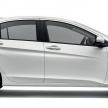
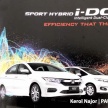
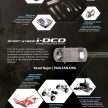
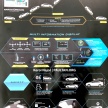
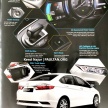

















AI-generated Summary ✨
Comments on the Honda City Hybrid launch focus on pricing, safety, and value. Many feel the RM89,200 price is high despite tax and duty incentives, with some expecting a lower price below RM60,000. Safety features like curtain airbags are often questioned, as some perceive their omission as profiteering. While some praise Honda Malaysia for quick responsiveness and good market positioning, others criticize the actual safety equipment, pricing strategies, and comparisons with cheaper models or international prices. Several comments highlight the disparity between local prices and Japan or US pricing, blaming taxes and profit margins. Overall, sentiments vary from excitement and approval to frustration over perceived high costs and reduced safety equipment, reflecting consumer expectations for better value and safety in hybrid offerings.